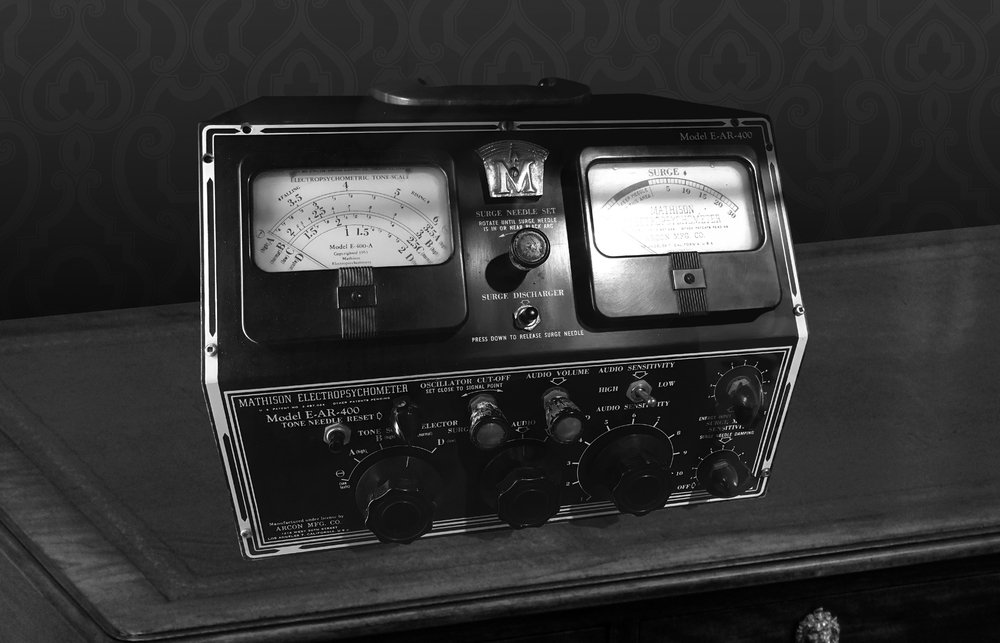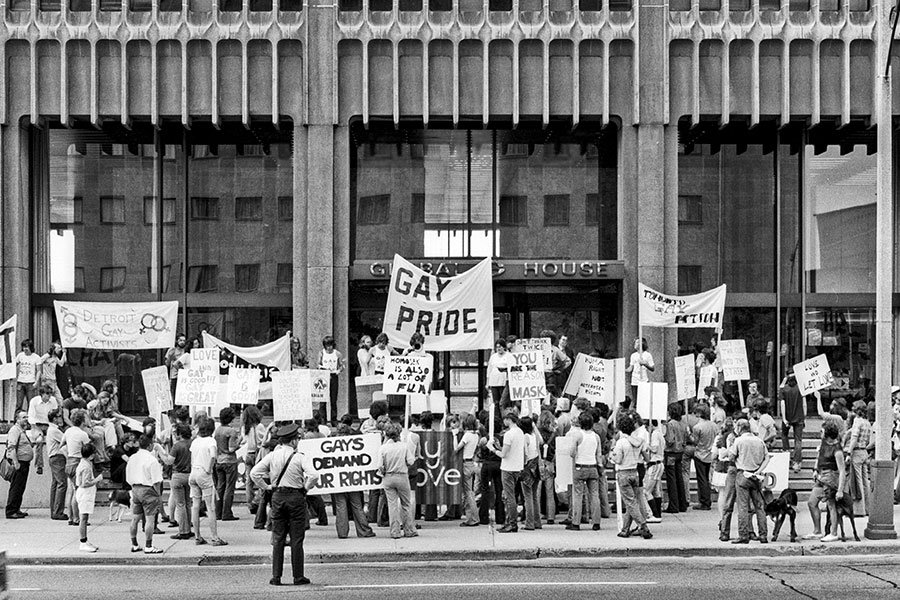History of Pride in Canada
Canada, like most countries, has a complicated history regarding the 2SLGBTQ+ community, and much of it is probably more recent than you’d expect. Canada was the 4th country in the world to officially legalize same-sex marriage, passing the Civil Marriage Act not even 20 years ago, on June 28th, 2005. This was a victory for the 2SLGBTQ+ community but didn’t come without a tough fight.
We Demand protest, Jerald Moldenhauer, August 28, 1971.
PRE-LEGALIZATION
The legal history is complex. Only 54 years ago, in 1969, Canada passed the Criminal Law Amendment Act which decriminalized LGBTQ+ relations by amending the previous sodomy and the vague “gross indecency” laws. This occurred shortly before the well-known Stonewall Riots in New York, and still upheld harsh restrictions on same-sex relationships, keeping queerness out of the public.
Before the 1969 Amendment, the situation for LGBTQ+ Canadians was dire. Sodomy laws existed in Canada since early colonization. Until 1869, same-sex sexual relations were legally punishable by death, which then changed to life in prison. This being said, there are no surviving records of anyone being executed on these charges - convicts were commonly imprisoned instead. Even with the death penalty off the table, though, being queer was very risky. The “gross indecency” law passed in 1892 and extended to women in 1953, made engaging in even non-sexual same-sex affection illegal. This law carried a maximum sentence of 5 years in prison and actions such as “simple touching, dancing and kissing” could be used as evidence as the law was intentionally vague, making convictions easier to achieve.
It’s easy to discuss LGBTQ+ history in legal jargon and statistics because it’s impersonal, but it’s impossible to reflect the real lived experiences of queer Canadians in such technical terms. Laws and statistics don’t mention the seizure of LGBTQ+ literature and erotica, or the violence of Operation Soap among other gay bar and bathhouse raids, or the “Special Project” “fruit machine” campaign.
Throughout the 1900s but long before as well, the government in cooperation with the RCMP and police perpetrated so much violence against the LGBTQ+ community and both their safe and private spaces. Police broke into a home to arrest two queer men in Edmonton, 1955. The bathhouse and gay bar raids were severe: Operation Soap, often referred to as Canada’s Stonewall, led to over 300 arrests at four Toronto bathhouses in 1981. Similar raids happened across the country, the most notable ones including The Sex Garage in 1990, Pisces Health Spa in 1981, and the Pussy Palace in 2000 which occurred during an all-female queer and trans event.
In the 50s and 60s, during the Cold War era, the RCMP worked with the FBI to keep lists of both known and suspected queer people in order to monitor if they were crossing the border, keep them from government jobs, and deny “security clearance and promotions.” The “fruit machine” campaign was created at the same time for the same reasons, due to the belief LGBTQ+ people were more susceptible to blackmail by spies, which led to consequences far more drastic than the loss of employment. Many were forced into "poverty, homelessness, having to go back in the closet, substance abuse, gay aversion therapy, sexual assaults, and for some — suicide.” This was disastrous for an already marginalized community. The “fruit machine” itself showed men lewd images of men and photographed their eyes, using enlarged pupils as an indicator of same-sex attraction.
Legal jargon, however, also doesn't talk about LGBTQ+ solidarity through the battle. The tireless advocacy throughout the AIDS epidemic, the beginnings and growth of queer creative spaces, and the early pro-LGBTQ+ organizations and public protests. When Everett George Klippert was released from prison in 1971 after proclaiming to police that he was gay in 1964, the first public gay protest occurred. We Demand happened in Ottawa with a group of approximately 100 people, and another group of about 20 in Vancouver to demand equal rights and protection for queer people. These protests grew into parades over the years, and then into what we know as Pride today, flourishing each June when thousands come to celebrate parades and queer events.
The 1970s saw more queer spaces develop, such as Canada’s first LGBTQ+ magazine The Body Politic published in 1971, the Lesbian Organization of Toronto opening a community safe house for lesbians and feminists in 1977, and the launch of Buddies in Bad Times LGBTQ+ theatre company in 1978. In the 1980s, the slowly growing positivity in queer communities took another hard blow with the increasingly concerning AIDS epidemic, originally called GRID (Gay-Related Immune Deficiency). This was hugely devastating but didn’t stop the community care and activists from fighting against the lack of support provided. Vancouver opened the first organization providing medical care for AIDS in 1983, shortly followed by the formation of the AIDS Committee of Toronto, and the Aids Committee of Ottawa later in 1985. AIDS Action Now (AAN) was formed in 1988 and kickstarted by successfully protesting a drug trial for Pentamidine, an American-approved drug for AIDS treatment. The drug trial was scrapped and by 1990, the government implemented the first national AIDS strategy and experimental treatment. ANN continued its work, also establishing the Canadian AIDS Treatment Information Exchange. The effects of the epidemic are felt to this day, but the way the queer community came together to fulfill the need for solidarity, community support, and mutual advocacy when the struggle of primarily gay men was ignored by the government and the unaffected public is admirable and deserves recognition.
Image of fruit box machine, Glen Crawford.
SINCE LEGALIZATION
Entering the 1990s and early 2000s, multiple cities were already independently holding official Pride events, and one of the first official LGBTQ+ marriages, Anne and Elaine Vautour, happened in Ontario, in 2001. The closer we reach to the 2005 legalization, the more progress we see on the federal scale. In 1992, the government lifted the ban on LGBTQ+ people in the military, in 1994 they could apply for refugee status, and in 1995 discrimination on the basis of sexual orientation was finally considered under Section 15 of the Charter of Rights and Freedoms. In 2000, the Supreme Court ruled LGBTQ+ publications, erotic or not, were protected under freedom of speech.
Since 2005, we have seen the LGBTQ+ community growing throughout the country. Canada has had multiple queer government officials, some before 2005. Among them are Glenn Murray, the first gay mayor in 1998, Kathleen Wynne, Canada’s first openly LGBTQ+ premier in 2013, Julie Lemieux, the first transgender mayor in 2017, and Blake Desjarlais, the first Two-Spirit MP elected to office in 2021. In 2016, a pride flag was raised at Parliament Hill, Ottawa for the first time. In 2017, November 20th was marked as the official Trans Day of Remembrance, and each year, the legislature holds a minute of silence to honour victims of anti-trans violence. Recognition grew more widespread rather quickly, even outside of legal or government-related matters. The 2010 Winter Olympics in BC included a Pride House, and in 2019 the University of Winnipeg started the first Two-Spirit archives with the assistance of Albert McLeod. Social progression was picking up speed even before federal legalization but grew exponentially in the past 20 years.
First Unofficial Pride March, Toronto, 1972.
GENDER-AFFIRMING CARE
Gender-affirming care in Canada has improved massively over the years, but still leaves more to be desired. The costs of top and bottom surgery are covered across the country but remain a struggle as there are only three clinics in Canada that provide genital surgery, which simply does not meet the demand. Many provinces fall short on other aspects of necessary gender-affirming medical care and procedures as well, British Colombia and Yukon being the best in the country and the Prairies and Atlantic Canada being among the worst.
Medical settings are still inaccessible to many trans and non-binary people, from something as simple as strictly gendered checkboxes on assessments, to the referral process and necessary documents to receive gender-affirming care. Patients require a mental health assessment and diagnosis of gender dysphoria, a support letter from a family doctor or clinic, and in certain provinces a letter from an endocrinologist, psychiatrist, or surgeon, which together can take years to acquire as there are not enough specialists to address the demand for these letters. Family doctors can offer hormone treatments and surgeries, but many struggle to do so due to a general lack of knowledge regarding trans healthcare and the barriers created by the surgery referral and request process.
Most provinces including Saskatchewan cover the costs of basic gender-affirming surgeries. Here, these include hysterectomy, mastectomy, vaginoplasty, phalloplasty, and metoidioplasty, but remain difficult to get due to the extensive patient vetting process, the limited number of specialists, the long waitlists, and many procedures requiring travel out of the province as they are not available directly. In Saskatchewan, the following are some aspects of gender-affirming care are currently not covered and must be fully paid for by the patient as they are deemed cosmetic surgeries: breast augmentation, chest contouring, body sculpting, facial hair removal, and hair transplantation, Chondrolaryngoplasty (reduction of Adam’s apple), certain hormone therapy drugs, and voice training and/or voice pitch surgery.
Major strides have been made in LGBTQ+ equality since legalization – the mere existence of Pride, let alone its popularity, are clear evidence of this. In the bustle of celebration, though, it’s still important to recognize the fight that led to current LGBTQ+ rights and the ongoing struggles faced by queer Canadians, especially in medical spheres. There is still work to be done in making trans healthcare more accessible, in protecting and ensuring our LGBTQ+ youth will receive better care and support in the future, in increasing knowledge and support regarding LGBTQ+ and Two-Spirit history and struggles, and in dismantling the common perception of the gender binary, especially for Indigenous LGBTQ+ communities.
STATS
AS OF 2022:
According to Statistics Canada, it’s estimated 1 million Canadians identify as LGBTQ+, making up 4% of the population (15 and older).
52% are women, 44% are men, and 3% are non-binary
Approximately 100,815 people fall under the trans/non-binary umbrella, making 0.33% of the population (15 and older).
The LGBTQ+ population is largely made of young people. 29.7% of LGBTQ+ Canadians are aged 15-24 (for comparison, people aged 15-24 make up 14% of the entire population), and 28.7% are 25-34. 7.3% are over the age of 65.
AS OF 2021:
The most popular cities in Canada for same-sex couples are Toronto (18% of LGBTQ+ population), Montreal (17%), and Vancouver (10%).
Pre-pandemic, LGBTQ+ Canadians were twice as likely to experience homelessness or housing insecurity.
AS OF 2019:
According to a poll conducted by the University of Saskatchewan's Social Science Research Laboratory, 78% of 400 participants either somewhat or strongly agreed Saskatchewan has become more accepting of the LGBTQ+ community since 2014. 5% of participants identified as a member of the LGBTQ+ community.
Despite the growing population of LGBTQ+ people, in 2019 police reported 263 LGBTQ+ related hate crimes, over half being violent crimes
AS OF 2016:
By 2016, the number of same-sex couples was 72,880, 0.9% of all couples. This was an increase of 60.7% since 2006. One-third were married, and two-thirds were common-law. 12% had children living with them.
Sources:
https://www.queerevents.ca/canada/pride/history
https://ccgsd-ccdgs.org/wp-content/uploads/2020/09/Canadian-History-Timeline.pdf
https://policyoptions.irpp.org/magazines/january-2017/the-legacy-of-the-hivaids-fight-in-canada/
https://nursesunions.ca/canada-beyond-covid-magazine/trans-affirming-care-is-life-saving-care/
https://www.lgbtqandall.com/gender-affirming-care-in-canada/
https://globalnews.ca/news/8900413/gender-affirming-healthcare-province-territory-transgender/
https://transsask.ca/wp-content/uploads/2022/12/The-Trans-Sask-Community-Report.pdf
https://www150.statcan.gc.ca/n1/pub/11-627-m/11-627-m2021062-eng.htm
https://www150.statcan.gc.ca/n1/pub/12-581-x/2022001/sec6-eng.htm
https://www.cbc.ca/news/canada/saskatchewan/saskatchewan-lgbt-pride-welcoming-1.5180209
https://www.cbc.ca/news/politics/statistics-canada-lgbtq-pride-report-1.6066638
https://www150.statcan.gc.ca/n1/daily-quotidien/210615/dq210615a-eng.htm



